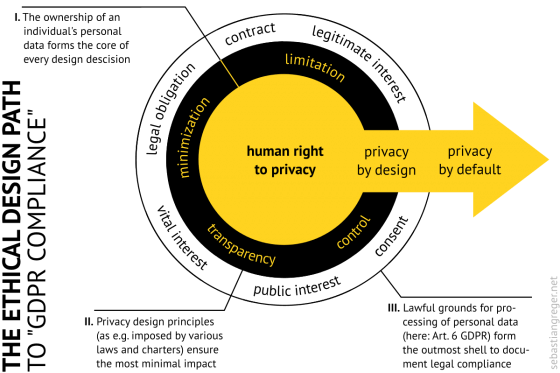Do government agencies know the path that leads to efficient and compliant web analytics tracking?
Hopefully this is a rhetorical question. However, if it’s not, then it’s high time to find a convenient and safe way there. You can expect some bumps in the road, whether in the form of technical constraints or the challenges of the GDPR looming on the horizon. Never fear! We’ll take this load off your shoulders by serving as your tour guides for the journey.
The top priority for government and public sector institutions is to provide high-level services. They have the same goal as any other profit organization. The expansion of their presence beyond physical locations significantly changes they way they operate. Being part of a digital ecosystem entails certain challenges.
The key to making the system thrive is to measure, analyze, and report on how all its elements work. Here’s where web analytics solutions come into play. Such software tools provide government institutions and public sector organizations with detailed insights allowing them to discover every possibility for improvement.
Organizations of public trust are in the spotlight. Clearly, they should set an example for responsible handling of data. This is particularly true when we consider that they process highly sensitive data like health, tax, juridical records, and so on. Safety measures need to be airtight and backed by double the usual vigilance.
We know that a safe web analytics strategy is a must for any organization with a digital presence. Institutions in the public eye require a specific approach. In this post we analyze some serious issues of particular importance for government agencies.
1. Privacy and GDPR
Respecting citizens’ privacy is critical for government agencies. The rise of new technologies has significantly increased the privacy risk landscape.
As noted by John Edwards, Privacy Commissioner of New Zealand, “there are bigger risks that have come with having bigger data holdings. More can go wrong, more spectacularly, more quickly than was the case under paper-based systems”.
He also states that the issues of data security and privacy are becoming a top business-technology priority, and that both the private and public sectors face the same expectations in this regard.
GDPR – the General Data Protection Regulation – hammers this point home. It’s included in the body of the law under the principle of privacy by design.
The notion itself was introduced back in the 1990s by Dr. Ann Cavoukian, Information and Privacy Commissioner of Ontario. Essentially, it holds that compliance with legislation and legal frameworks can’t be the only assurance of privacy. It should be guaranteed by the way organizations operate.
The concept of ‘privacy by design’ adopts proactive measures rather than reactive ones. This approach is stressed in Article 35 GDPR, which states:
Where a type of processing in particular using new technologies, and taking into account the nature, scope, context and purposes of the processing, is likely to result in a high risk to the rights and freedoms of natural persons, the controller shall, prior to the processing, carry out an assessment of the impact of the envisaged processing operations on protecting personal data. A single assessment may address a set of similar processing operations that present similar high risks.
Furthermore, privacy impact assessments (PIAs) lie at the core of the privacy by design approach. These help organizations discover and solve problems at a projects early stages. Such measures should lower or even eliminate the costs and reputation damage that could result from a breach of data protection laws.
Free Ebook: 6 Steps to Start Capturing Customer Journey in e-Banking and m-Banking
Learn how to improve customer experience and UI of the e-Banking and m-Banking platforms
Download FREE EbookThat’s about it when it comes to a theoretical perspective on data privacy. But what about practical considerations? In other words, what do government organizations need to have in order to handle data safely.
Organizations in the public sector need a reliable and verified tool. Beside the basic capabilities of web analytics for governments that help them optimize their websites, the right software should feature:
- automatic anonymization of visitor IP address
- data retention
- web analytics opt-out feature on your site
- Do Not Track setting
- visitors consent collection
Under the GDPR you will need users permission in the form of consent to process their data. However, users might change their mind and wish to withdraw that consent. So you need to manage these requests. Imagine dealing with millions of such tasks! Thankfully, theres a convenient way to do it by using a Consent Manager. This feature will be available shortly, so follow our blog to keep up-to-date on the news.
Privacy simply cant be discussed without reference to GDPR. This legislation is generating a lot of confusion among companies and organizations that process data. Its one of those rough patches we mentioned earlier.
However, reports reveal that some public sector bodies think theyre exempt from the Regulation. Such a belief is based on the laws special conditions and derogations that allow EU Member States to limit the reach of GDPR in defense of the public interest.
That said, the fact is that GDPR applies to all institutions that process the personal data of European Union residents, regardless of their size or sector they operate in.
The aim of this legislation is to tighten up the rules of collecting, storing, and handling data. Its been created to protect all EU citizens from privacy and data breaches. The cornerstone of the GDPR is the human right of privacy.
As we can see below, the path to GDPR compliance is a complex one centered around ethical principles of handling personal data.

So in the face of a growing number of security breaches, stricter data protection regulations are simply the natural order of things. The most common violations of data security include:
- hackers and ransomware launchers
- accidental loss
- exposure of data (caused by improper destruction of records).
As reported by Gemalto, a leading global provider of digital security solutions, the first half of 2017 witnessed 918 data breaches worldwide. A whopping 89 of them affected the public sector.
The new EU data protection rules certainly impose stringent requirements and restrictions on web tracking. Thus, governments and public sector organizations handling data need the right tools to ensure compliance with GDPR. If you want to get the bigger picture, have a look at how Piwik PRO addresses the matter of GDPR compliance for governments.
2. Control over data
There’s mounting public concern about potential digital threats. Governments must go to great lengths to protect their citizens privacy. Part of this is avoiding any exposure of personal data to global corporations.
Lets make it clear with a concrete example. Consider the possible risk involved with using Google Analytics, which is employed by around 60% of all websites. GA tracks user activities. It allows Google to know what visitors went to a particular website and when they were there.
By applying a range of services like AdSense, it builds very precise profiles of both websites and their visitors. Google gathers quite detailed data and information on its users. This data is further used to create custom audiences and targeted ads displayed via AdWords.
Government agencies should stay on the safe side and avoid such practices. They can, for instance, choose an analytics vendor that allows them to host their web analytics software and track data inside their own dedicated infrastructure. This is precisely what Piwik PRO offers. Government bodies can gather, store, and analyze data in one place without sending it to a third party. Full control of data is a prerequisite to compliance with privacy regulations.
3. Professional support
Governments around the world use web analytics on a daily basis. But without support and expertise they can’t unlock its full potential. This has been demonstrated by GIS (Geographic Information Systems) in New Zealand, who conducted a survey to see how the public sector handles web analytics capabilities.
It turned out that 81% of respondents expressed the need for more analytics support, tools, and up-skilling.
This is just one of many examples, but were aware that guidance is always welcome if you want to get the best results for your efforts. Its crucial to choose a web analytics vendor who provides you not only with professional onboarding but also stays by your side, giving expert advice along the way.
Government organizations need reliable and qualified support to better perform their duties in serving the public. Some vendors, like Piwik PRO, are there to help not only with deployment, but also assist with set-up and give guidance whenever you run into problems. Public sector institutions can feel at ease and dont need to keep a team of IT experts on the payroll. To learn exactly what this support looks like in practice, read our post on self-hosted analytics.
Remember, however, that support is not only about technical constraints. Government agencies should seek a web analytics vendor that advises on best practices to get the most out of their tools. Their advice should also involve recommendations on:
- defining business goals and measurement structure
- help with reading and interpreting reports and data
- tips on using features that bring the most value
4. Ease of integration
When it comes to the web analytics tool itself, it must be flexible and easy to modify. The expectations of government bodies are no exception, as they need something adjustable to their unique needs and requirements.
When choosing a solution for web analytics for governments and public institutions, look for tools that can be enhanced with numerous plugins and smoothly integrated with software already in use by government agencies. When it comes to Piwik PRO, you can take advantage of integration with external tools like:
- SAML – Security Assertion Markup Language
- LDAP – The Lightweight Directory Access Protocol (coming soon)
- Active Directory (coming soon)
As every organization has its own unique requirements and expectations, its vital to find the right tool and strategy that suits its business needs. Look at our integration section to learn more about features and modules that might come in handy for your data handling.
5. Scaling to handle high traffic
As a significant point of contact for citizens, government agencies websites need to handle large volumes of traffic day after day. Of course, high numbers of visitors to a government webpage are always welcome.
However, it may be quite taxing on resources, calling for more advanced infrastructure that will scale to handle such heavy traffic. Thats why government agencies require web analytics tools that offer these capabilities. For example, Piwik PRO has made a priority of major performance improvements. It can now easily scale to millions of pageviews per month and to thousands of registered websites at once. Moreover, product updates bring more functionalities and further advancements. This ensures enterprise-level services that scale the platform to even higher traffic volumes.
Free Ebook: 6 Steps to Start Capturing Customer Journey in e-Banking and m-Banking
Learn how to improve customer experience and UI of the e-Banking and m-Banking platforms
Download FREE EbookFinal thoughts
Efficient and reliable web analytics for governments is no holy grail. Its just a matter of defining goals and establishing a business strategy. Then you have to find a suitable vendor. This is a partner that understands and addresses the specific concerns linked to organizations serving the public. We hope that this post has helped make the decision process a bit easier. If you want to know more about finding the right software to meet the needs of public institutions, reach out to us.




